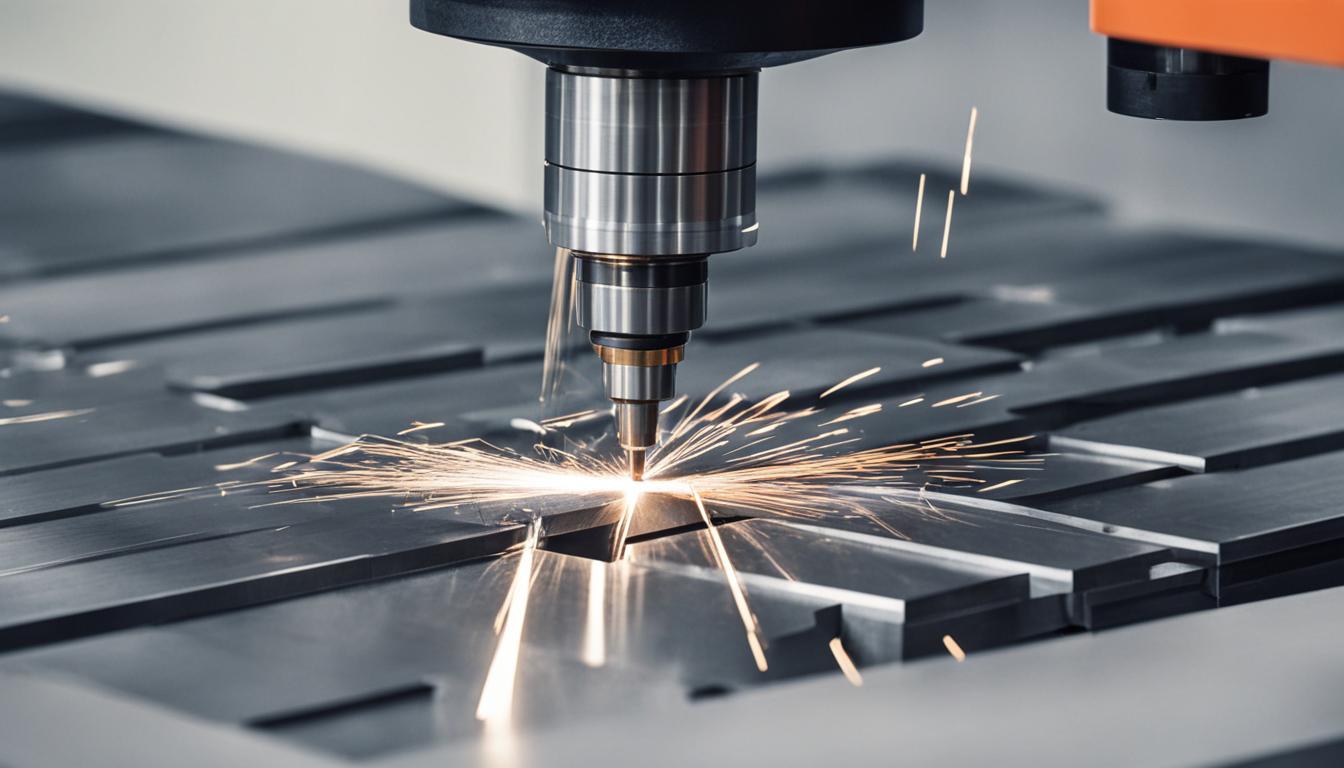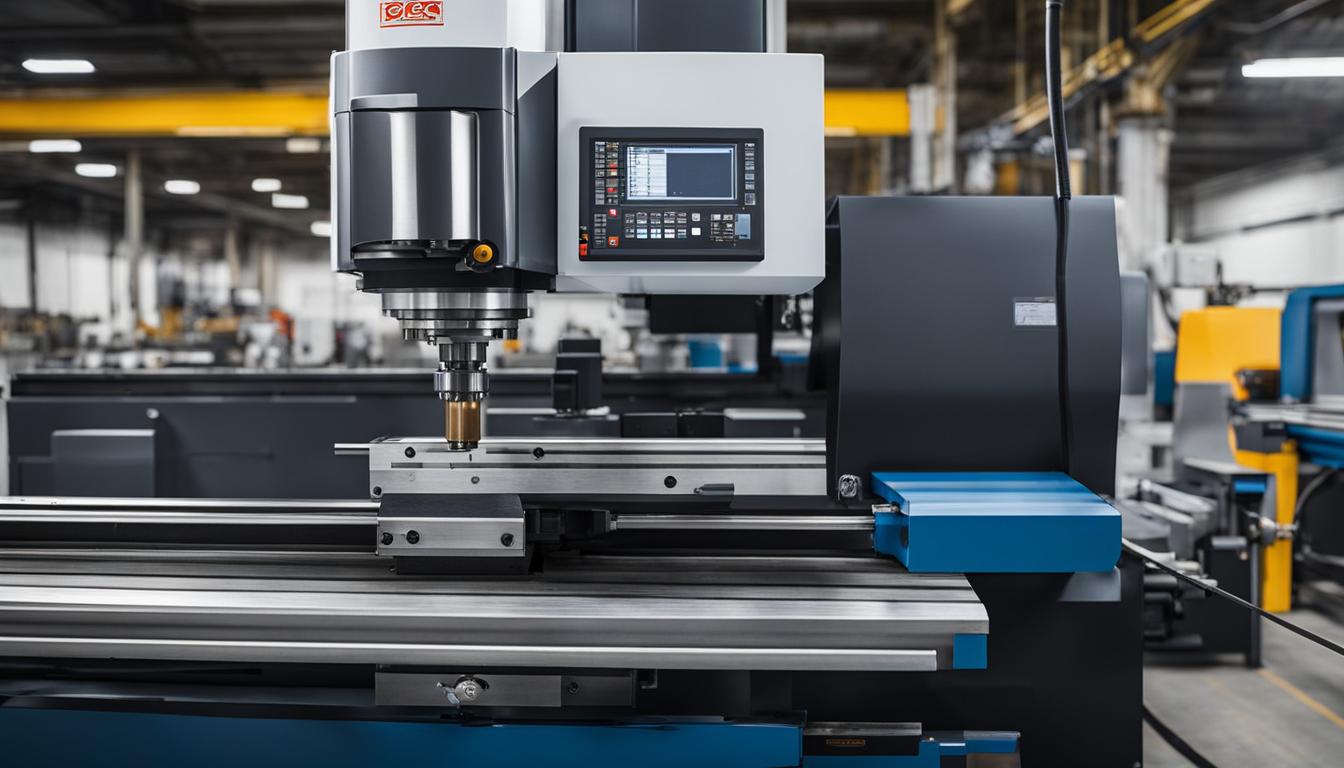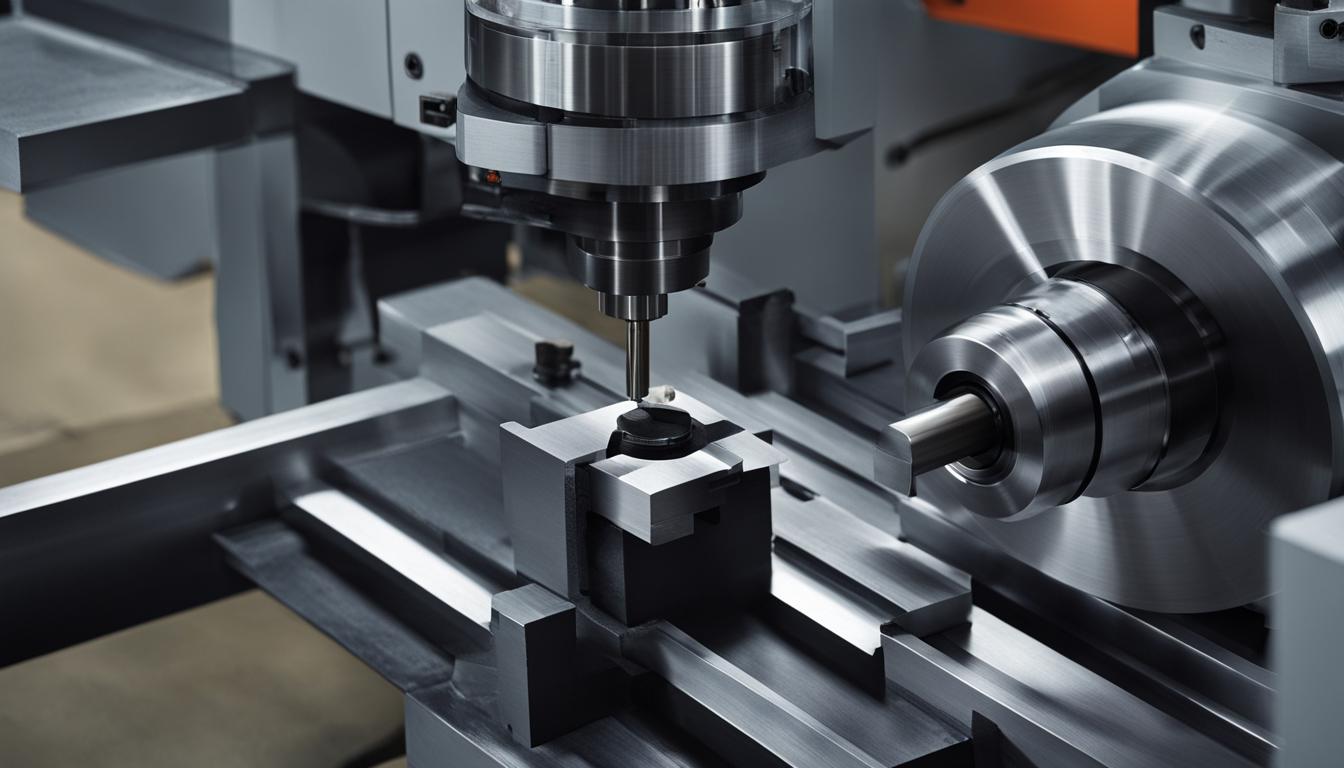CNC lathes and mills differ primarily in their operation and the types of parts they produce. A CNC lathe rotates the workpiece against a stationary cutting tool, making it ideal for creating cylindrical or symmetrical parts like shafts, bolts, and pipes. The lathe operates on two axes (X and Z) and excels at high-speed production of round components.
In contrast, a CNC mill uses a rotating cutting tool that moves along multiple axes (typically 3, 4, or 5) while the workpiece remains stationary. This allows mills to create more complex, non-cylindrical parts with various shapes and features, such as engine blocks, molds, and aerospace components. Mills are more versatile in terms of the shapes they can produce but are generally more expensive and complex to operate than lathes. The choice between a CNC lathe and mill depends on the specific part requirements, production volume, and desired features. Lathes are more cost-effective for cylindrical parts, while mills offer greater flexibility for complex geometries.
CNC Lathe Applications
A CNC lathe is a versatile machine that finds applications in various industries such as automotive, aerospace, and medical. Its ability to create conical or cylindrical parts with precision makes it an essential tool for many manufacturing processes.
Here are some common applications of CNC lathes:
- Production of screws: A CNC lathe is used to manufacture screws of different sizes and shapes. The machine’s rotating spindle and cutting tools perform precise threading operations, ensuring accurate threads on the screw.
- Machining shafts: CNC lathes are ideal for machining shafts used in automotive, aerospace, and industrial applications. The machine can produce long and slender shafts with high precision and consistency.
- Fabrication of knobs: Knobs used in various products, such as control panels or household appliances, can be easily manufactured using a CNC lathe. The machine can accurately shape and finish knobs to meet design specifications.
- Creation of disc cams: Disc cams are essential components found in the mechanical systems of many machines. Using a CNC lathe, disc cams of different shapes and sizes can be produced with ease and accuracy.
- Manufacturing crankshafts: CNC lathes are commonly used to machine precise crankshafts for engines. The machine’s capabilities allow for the production of crankshafts that meet strict tolerance requirements.
In addition to the applications mentioned above, a CNC lathe can also perform operations like threading, grooving, and drilling, further expanding its versatility in manufacturing processes.
CNC Mill Applications
A CNC mill is a versatile machine capable of working with complex shapes and creating various features such as flat surfaces, deeper holes, pockets, grooves, planes, and edges. It is an ideal choice for machining parts that require intricate designs, fine details, or multiple operations. CNC mills find wide-ranging applications in industries such as prototyping, mold making, tooling, and the production of complex components.
Applications of CNC Mills:
- Prototyping: CNC mills are crucial in the prototyping process, allowing manufacturers to quickly create and refine product designs with precision and accuracy.
- Mold Making: CNC mills are used to create molds for casting processes. They can accurately machine intricate details and complex shapes required for mold production.
- Tooling: CNC mills are essential for creating various types of tools, including cutting tools, jigs, fixtures, and molds used in manufacturing processes.
- Complex Component Production: CNC mills excel at machining complex components used in industries like aerospace, defense, and automotive. They can accurately create intricate features and achieve tight tolerances.

As technology advances, CNC mills continue to enhance their capabilities, offering better precision, speed, and automation. These advancements enable manufacturers to achieve faster production times, increased productivity, and improved overall efficiency.
Types of CNC Lathes and Mills
When it comes to CNC machining, there is a wide variety of lathes and mills available, each designed to suit specific machining needs. These machines offer different speeds, working capacities, levels of accuracy, and cutting capabilities. The choice of CNC machine depends on factors such as the complexity of the part, required tolerances, and the type of material being machined. Let’s take a closer look at the different types of CNC lathes and mills:
CNC Lathe Types
- Engine Lathe: This is the most common type of CNC lathe, primarily used for general-purpose machining. It is suitable for both small and large-scale production.
- Swiss-Type Lathe: These lathes are known for their exceptional precision and are commonly used for producing small, intricate parts.
- Turret Lathe: Turret lathes feature a rotating tool turret and are ideal for high-volume production and repetitive tasks.
- Vertical Lathe: As the name suggests, these lathes have a vertical configuration and are used for machining large, heavy parts.
CNC Mill Types
- Vertical Milling Machine: This is the most common type of CNC mill, known for its versatility and ability to handle a wide range of machining operations.
- Horizontal Milling Machine: These mills have a horizontal spindle orientation, making them suitable for tasks requiring heavy cutting and removal of material.
- Bed Mill: The bed mill design features a stationary worktable and a movable spindle, allowing for greater flexibility in machining larger workpieces.
- Gantry Mill: Gantry mills are often used for machining large workpieces in industries such as aerospace and automotive.
Choosing the right type of CNC lathe or mill is crucial to ensure efficient and accurate machining. It is important to consider factors such as the complexity of the part, required tolerances, and the type of material being machined. By selecting the appropriate CNC machine, manufacturers can achieve optimal results and enhance productivity in their machining processes.
Material Compatibility
When it comes to CNC lathes and mills, the choice of material is crucial for successful machining. These machines primarily work with metal bar stock, with aluminum and steel being the most commonly used materials. However, they are also capable of handling other materials such as brass, copper alloys, and plastics.
The machining process heavily relies on the properties of the material, including hardness, flexibility, melting point, conductivity, and cost. It’s important to consider material compatibility when choosing a CNC machine, as some machines may not be suitable for very tough metals or may not work well with specific materials due to their unique properties.
By understanding the material compatibility of CNC lathes and mills, you can ensure that your chosen machine is well-suited for the materials you intend to work with, allowing for efficient and accurate machining results.
Choosing the Right CNC Machine
When it comes to selecting a CNC machine, several factors need to be taken into consideration. This decision will impact the success of your machining project and the overall efficiency of your operations. By carefully evaluating the type of parts or components, required tolerances, complexity of the design, and budget, you can make an informed choice. Consulting machine shops and fabrication facilities will offer valuable insights regarding material capabilities, machine tolerances, and complexity levels.
Understanding the specific requirements of your project is essential to choosing the optimal CNC machine. By analyzing the intricacies of your design and consulting with experts, you can determine whether a CNC lathe or a CNC mill is more suitable. Each machine has its strengths and limitations, and selecting the right one can make a significant difference in the quality and precision of your final product.
Factors to consider when choosing a CNC machine:
- Type of parts or components: Different machines excel at different types of machining operations. Consider the shape, size, and complexity of the parts you need to manufacture.
- Required tolerances: Evaluate the level of precision required for your project. Some CNC machines are capable of achieving higher tolerances than others.
- Complexity of the design: Determine whether your design requires multi-axis machining or intricate details that can be better achieved with specific machines.
- Budget: Set a budget for your CNC machine investment. Consider the long-term cost and potential return on investment.
By carefully assessing these factors, you can make an informed decision that aligns with your project goals and resource constraints. Choosing the right CNC machine will ensure optimal machining performance and help you achieve the desired outcome for your project.

| CNC Lathe | CNC Mill |
|---|---|
| Best for cylindrical or conical parts | Excel at complex shapes and flat surfaces |
| Ideal for high-volume production | Well-suited for prototyping and low-volume production |
| Perform operations like threading and grooving | Capable of deeper holes, pockets, and grooves |
| Typically lower cost | Higher initial investment |
| Used in industries such as automotive and aerospace | Frequently utilized in mold making and tooling industries |
Benefits of CNC Lathe and Mill
CNC lathes and mills offer numerous advantages over traditional machining methods. The benefits of using CNC machines in fabrication and machining are significant:
- Fast and Efficient Machining: CNC machines can perform tasks quickly and efficiently, reducing production time and improving overall productivity. With automated processes, CNC lathes and mills can execute complex operations with speed and accuracy.
- Precise Accuracy: CNC machines utilize computer control systems to ensure precise cuts and measurements. This level of accuracy allows for consistent and high-quality machining, resulting in parts that fit together seamlessly.
- Reduced Human Error: The automation provided by CNC machines reduces the dependence on human operators, minimizing the risk of errors due to fatigue, oversight, or other factors. As a result, the probability of producing defective parts is significantly reduced.
- Simultaneous Manufacturing: CNC machines have the capability to process multiple parts simultaneously, streamlining the production process and increasing output. This efficiency is particularly beneficial for large-scale manufacturing projects.
- Faster Production Speeds: CNC machines can execute machining operations at faster speeds compared to traditional machining methods. This faster production rate translates into shorter lead times and improved delivery timelines.
- Better Repeatability: CNC machines can replicate the same machining process consistently, ensuring that each part is identical to the previous one in terms of dimensions and quality. This repeatability is crucial for maintaining product consistency and meeting strict quality standards.
- Wide Material Compatibility: CNC lathes and mills can work with a wide range of materials, including metals, plastics, and composites. This versatility allows manufacturers to handle various projects and work with different materials without requiring separate machines for each material type.
Improved Quality and Cost-Effectiveness
By leveraging the benefits of CNC lathe and mill machining, businesses can achieve consistent quality, increased productivity, and cost-effective production. These advantages make CNC machines an indispensable tool in industries such as automotive, aerospace, medical, and many others, where precision and efficiency are paramount.
Now, let’s delve further into specific considerations for CNC machining in the next section.
Considerations for CNC Machining
When it comes to achieving optimal CNC machining results, several factors need to be considered. These factors revolve around understanding machine capabilities, material properties, design files, and machining costs.
1. Understanding Machine Capabilities
Before starting a CNC machining project, it is crucial to have a thorough understanding of the capabilities of the CNC machine being used. This includes knowing the machine’s cutting capabilities, maximum feed rates, spindle speeds, and tooling options. By understanding these capabilities, operators can ensure that the machine is used efficiently and effectively for the given project.
2. Material Properties
The properties of the material being machined play a significant role in the CNC machining process. Different materials require different cutting speeds, feeds, and tooling strategies. It is important to consider factors such as material hardness, heat resistance, and machinability when selecting the appropriate tools and machining parameters for a specific material.
3. Design Files
The design files used in CNC machining also need careful consideration. Simplifying the design where possible can help reduce machining costs and improve overall efficiency. It is important to collaborate closely with design engineers to optimize the design for CNC machining, identify potential issues early on, and ensure compatibility with the CNC machine’s capabilities.
4. Tolerances and Surface Finish Requirements
Discussing and specifying the required tolerances and surface finish early in the project is essential for achieving optimal CNC machining results. Different machining techniques and tooling strategies may be required to meet specific tolerance and surface finish requirements. By clearly defining these requirements, operators can ensure that the final machined parts meet the desired specifications.
5. Operator Training
Proper training for CNC machine operators is crucial for maximizing the capabilities of the CNC machine. Operators should be well-versed in programming, machine operation, tooling setup, and troubleshooting. Ongoing training and continuous improvement programs can help operators stay up to date with the latest CNC machining techniques and best practices.
6. Collaboration with Reputable Machine Shop
Collaborating with a reputable machine shop can provide valuable insights and guidance for achieving optimal CNC machining results. Experienced machinists can offer expertise in material selection, tooling strategies, and process optimization. They can also help identify potential issues and provide recommendations for improving the overall machining process.
| Considerations | Factors |
|---|---|
| Machine Capabilities | Understanding cutting capabilities, feed rates, spindle speeds, and tooling options |
| Material Properties | Taking into account material hardness, heat resistance, and machinability |
| Design Files | Simplifying designs, optimizing compatibility with CNC machine capabilities |
| Tolerances and Surface Finish Requirements | Defining and meeting specific tolerance and surface finish needs |
| Operator Training | Ensuring operators are skilled in programming, operation, and troubleshooting |
| Collaboration with Reputable Machine Shop | Seeking expertise, insights, and guidance from experienced machinists |
CNC Lathe vs CNC Mill: Comparison Summary
In summary, CNC lathes and mills have important distinctions in their operations and applications. A CNC lathe is effective for cylindrical or conical parts, while a CNC mill excels at complex shapes and flat surfaces. The choice between a lathe and a mill depends on the specific machining requirements of a project, the type of material being used, and the desired outcome. It is important to select the right CNC machine based on these considerations to ensure efficient and accurate machining.
Advancements in CNC Technology
CNC machining technology is constantly evolving, bringing forth exciting advancements that revolutionize the industry. These advancements have significantly improved the capabilities of CNC machines in terms of precision, speed, automation, and versatility. With the integration of cutting-edge software and hardware, CNC machines have become more efficient, enabling enhanced cutting techniques and faster production speeds.
One of the key advancements in CNC technology is the integration of advanced software systems that allow for more precise control over the machining process. These software solutions provide sophisticated CAD/CAM capabilities, enabling engineers and machinists to create intricate designs with ease. CNC machines can now execute complex tool paths, resulting in highly accurate and intricate components.
In addition to software advancements, hardware innovations have also played a crucial role in enhancing CNC machining capabilities. High-speed spindles, advanced tool changers, and improved machine rigidity have enabled faster tooling changes and increased production speeds. This has led to improved efficiency and reduced machining times, allowing businesses to enhance productivity and meet tight manufacturing deadlines.
CNC machines are also becoming more integrated with other manufacturing processes, thanks to advancements in automation. The ability to seamlessly integrate CNC machines with robotics, conveyor systems, and other automated equipment has revolutionized production workflows. This integration facilitates a streamlined manufacturing process, minimizing human intervention and reducing the risk of errors.
Looking to the future, CNC machining is poised for further advancements with the incorporation of artificial intelligence (AI), machine learning, and Internet of Things (IoT) connectivity. AI-powered CNC machines can analyze and optimize machining parameters in real-time, improving efficiency and accuracy. Machine learning algorithms can identify patterns and trends in machining data, enabling predictive maintenance and proactive process optimization. IoT connectivity allows for remote monitoring and control of CNC machines, enhancing operational efficiency and reducing downtime.
Innovations in CNC Technology:
- Advanced CAD/CAM software for precise control over the machining process
- High-speed spindles and improved machine rigidity for faster tooling changes and increased production speeds
- Integration with robotics and automation systems for seamless manufacturing workflows
- Artificial intelligence and machine learning for real-time optimization and predictive maintenance
- Internet of Things connectivity for remote monitoring and control of CNC machines
With the continuous advancements in CNC technology, businesses can expect to benefit from improved machining capabilities, reduced production costs, and increased competitiveness in the global manufacturing landscape.
Conclusion
In conclusion, CNC lathes and mills play a vital role in the world of custom fabrication and machining. While both machines use computer control systems to make precise cuts and shapes, they have important differences in their operations and applications.
When it comes to choosing between a CNC lathe and a CNC mill, it is crucial to understand the specific machining requirements of the project. A CNC lathe is well-suited for creating cylindrical or conical parts, while a CNC mill excels at machining complex shapes and flat surfaces.
CNC machining offers several advantages, including speed, precision, efficiency, and flexibility. By leveraging the benefits of CNC machining, businesses can achieve faster production speeds, automate complex operations, and work with a wide range of materials.
It is also important to stay updated with advancements in CNC technology. Ongoing developments in software and hardware continue to enhance CNC machines’ capabilities, enabling smarter cutting techniques, faster production speeds, and improved integration with other manufacturing processes.
